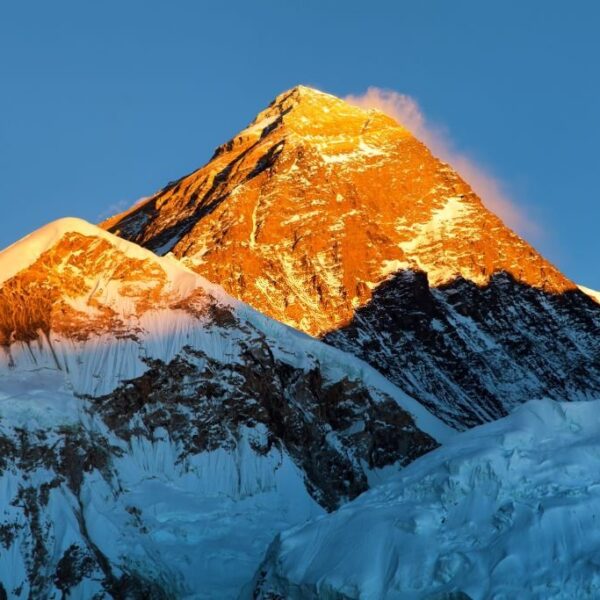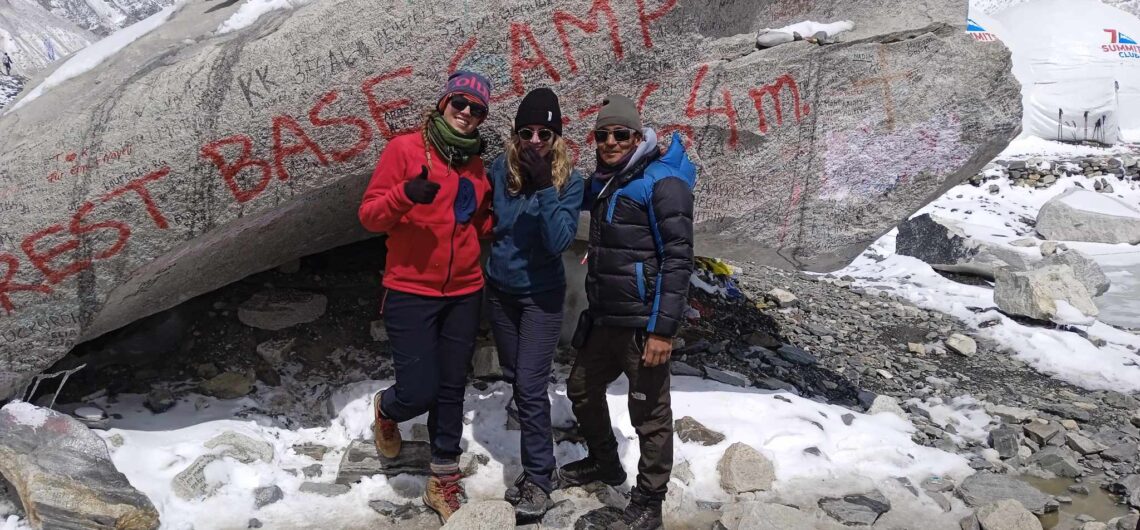The Everest Base Camp (EBC) trek is one of the most iconic and rewarding trekking experiences in the world. Standing at the foot of Mount Everest, the highest peak on Earth, is a dream for many adventurers. Before you lace up your hiking boots, it’s essential to prepare yourself both physically and mentally, and understand what the journey entails. Here’s everything you need to know before embarking on this life-changing trek:

1. Best Time to Trek
The ideal time to trek to Everest Base Camp is during the pre-monsoon (spring) and post-monsoon (autumn) seasons. These months offer clear skies, stable weather, and great visibility of the mountains.
- Spring (March to May): The temperatures are warmer, and the rhododendron forests bloom beautifully along the trail.
- Autumn (September to November): After the monsoon rains, the skies are crisp and clear, providing stunning views of the Himalayas.
While it’s possible to trek in winter (December to February) and during the monsoon (June to August), be prepared for colder weather, snow-covered trails, and reduced visibility.
2. Trek Duration and Route Options
The standard trek to Everest Base Camp takes about 12-14 days, including acclimatization days. The journey typically begins with a flight from Kathmandu to Lukla, followed by trekking through villages like Namche Bazaar, Tengboche, Dingboche, and finally reaching Base Camp.
Route Options:
- Standard EBC Route: Takes you to Base Camp and back via the same path.
- EBC with Gokyo Ri and Cho La Pass: A more challenging and scenic route that adds a trek to the Gokyo Lakes and crosses the Cho La Pass before joining the EBC trail
3. Physical Fitness and Training
The Everest Base Camp trek is a moderate-to-challenging trek that requires good physical conditioning. While you don’t need technical climbing skills, you should be prepared for long days of walking (5-7 hours per day) at high altitudes.
Training Tips:
- Cardio Training: Running, cycling, swimming, or hiking will help build endurance.
- Strength Training: Focus on your legs, core, and back muscles. Exercises like squats, lunges, and stair climbing are beneficial.
- Hiking Practice: If possible, do some practice hikes carrying a loaded backpack to simulate the real trek.
- Altitude Training: If you have access to higher elevations, practice hiking there to get a feel for the effects of altitude.
4. Acclimatization and Altitude Sickness
Altitude sickness is a common concern on the Everest Base Camp trek, as the highest point (Kala Patthar) reaches 5,545 meters (18,192 feet). To minimize the risk of altitude sickness, the trek includes acclimatization days in places like Namche Bazaar and Dingboche.
Symptoms of Altitude Sickness:
- Headache
- Dizziness
- Nausea
- Shortness of breath
To prevent altitude sickness:
- Ascend Gradually: Follow the trek itinerary closely and avoid rushing.
- Stay Hydrated: Drink plenty of water, at least 3-4 liters a day.
- Eat Carbohydrates: Foods rich in carbs help maintain energy levels at high altitudes.
- Consider Medication: Many trekkers take Diamox (acetazolamide) to help with acclimatization. Consult your doctor before taking any medication.

5. Packing Essentials
Packing wisely is key to a comfortable trek. Here’s a list of must-have items:
- Clothing:
- Moisture-wicking base layers (thermal tops and bottoms)
- Insulating mid-layers (fleece or down jacket)
- Waterproof jacket and pants
- Trekking pants and t-shirts
- Hat, gloves, and neck gaiter
- Footwear:
- Broken-in, waterproof trekking boots
- Comfortable trekking socks (merino wool recommended)
- Flip-flops or camp shoes for evenings
- Gear:
- Good-quality sleeping bag (rated for at least -10°C/14°F)
- Trekking poles
- Daypack (20-30 liters) with a rain cover
- Sunglasses and sunscreen (the sun is intense at high altitudes)
- Refillable water bottles or a hydration bladder
- Headlamp with extra batteries
- Personal Items:
- Passport and trekking permits (TIMS card and Sagarmatha National Park Permit)
- Basic first aid kit
- Snacks like energy bars, dried fruits, and nuts
6. Permits and Regulations
To trek to Everest Base Camp, you need two main permits:
- Sagarmatha National Park Entry Permit: Required to enter the Everest region.
- TIMS Card (Trekkers’ Information Management System): Required for all trekkers in Nepal.
Both permits can be obtained in Kathmandu or through your trekking agency. Make sure to carry these documents with you at all times during the trek.
7. Trekking Guides and Porters
Hiring a guide and/or porter is highly recommended, especially if it’s your first time trekking in Nepal. Here’s why:
- Guides: They provide valuable insights into local culture, geography, and safety. They also handle logistics, help with altitude management, and ensure you’re following the best route.
- Porters: Hiring a porter helps lighten your load, allowing you to trek with only a daypack. Porters typically carry 15-20 kg (33-44 lbs) of your gear.
Make sure to hire guides and porters through a licensed agency to ensure fair wages and good working conditions.
8. Food and Accommodation
Along the Everest Base Camp trek, you’ll stay in tea houses—basic lodges offering food and accommodation. While the amenities are simple, they provide a cozy place to rest after a day of trekking. Expect:
- Rooms: Twin-sharing rooms with beds, blankets, and sometimes attached bathrooms (in lower villages).
- Food: Meals consist of local staples like dal bhat (rice and lentils), momos (dumplings), noodles, and soups. You can also find western dishes like pancakes, pasta, and pizza in some tea houses.
9. Cost of the Trek
The total cost of the Everest Base Camp trek can vary based on the level of comfort and services you choose. Here’s a breakdown of typical expenses:
- Trekking Permit Fees: $50-60
- Accommodation and Food: $25-50 per day (tea house + meals)
- Guide and Porter Fees: $25-35 per day for a guide; $15-25 per day for a porter.
- Round-trip Flights (Kathmandu to Lukla): $180-200 (one-way).
10. Responsible Trekking
When trekking in Nepal, it’s important to follow eco-friendly practices to preserve the fragile environment of the Himalayas:
- Carry out all trash: Avoid leaving any waste behind on the trail.
- Use refillable water bottles: Minimize the use of plastic by refilling your bottles at tea houses or using water purification tablets.
- Respect local culture: Follow the customs and traditions of the Sherpa people and other communities along the trail.
Conclusion
The Everest Base Camp trek is a journey of a lifetime, but it requires thorough preparation and planning. By training well, packing smartly, and respecting the local environment and culture, you’ll be well-equipped for an unforgettable adventure to the foot of the world’s highest peak. Safe trekking!


Comments